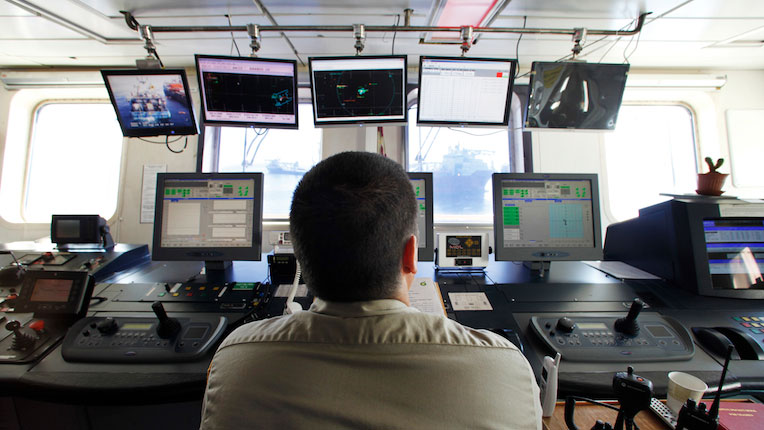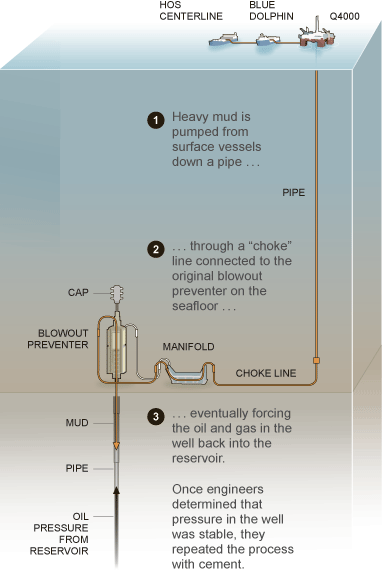The Static Kill and the Death of the Macondo Well

On July 19, BP publicly raised the possibility of killing the well before completing a relief well, through a procedure called a "static kill." Like the top kill, the static kill involved pumping heavy drilling mud into the well in an effort to push oil and gas back into the reservoir. Because the oil and gas were already static—held in place by the capping stack—the pumping rates required for the static kill to succeed were far lower than for the top kill.
AUG. 3 | The Static Kill

By 11:00 p.m. on August 3, the static kill had succeeded. The following evening, Admiral Allen authorized BP to follow the mud with cement. BP finished cementing the next day. On August 8, Admiral Allen reported that the cement had been pressure-tested and was holding.
In mid-September, the first relief well—which BP had begun drilling in early May—finally intercepted the Macondo well, allowing BP to pump in cement and permanently seal the reservoir. On September 19, 152 days after the blowout, Admiral Allen announced: "the Macondo 252 well is effectively dead."
